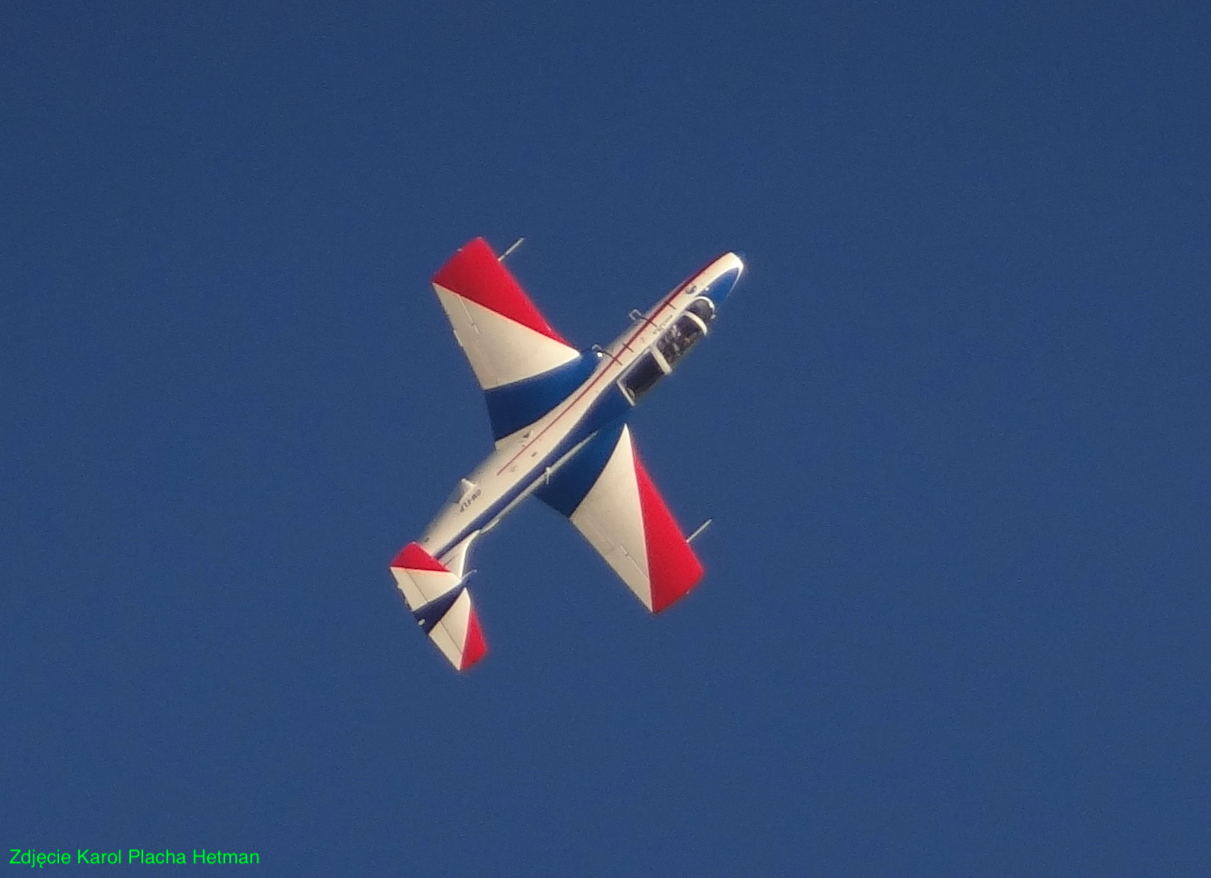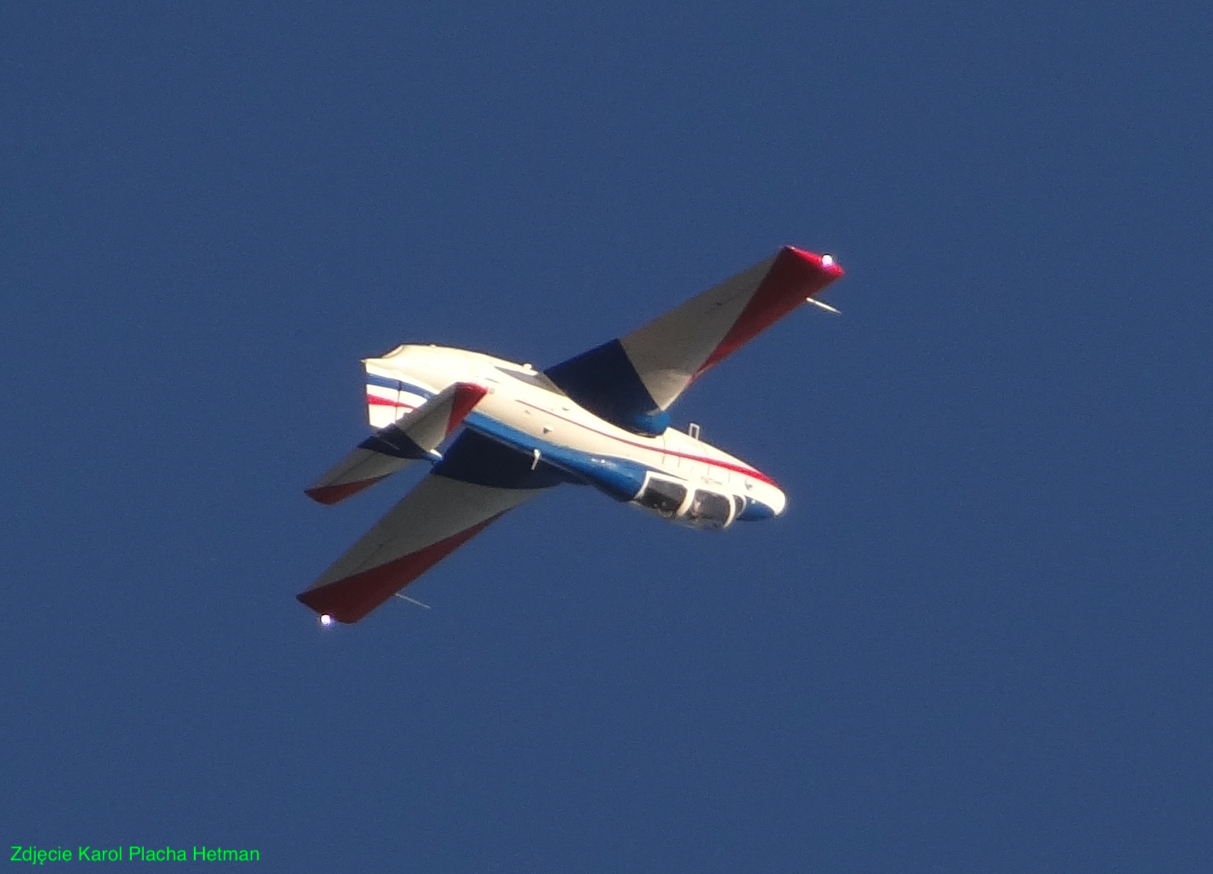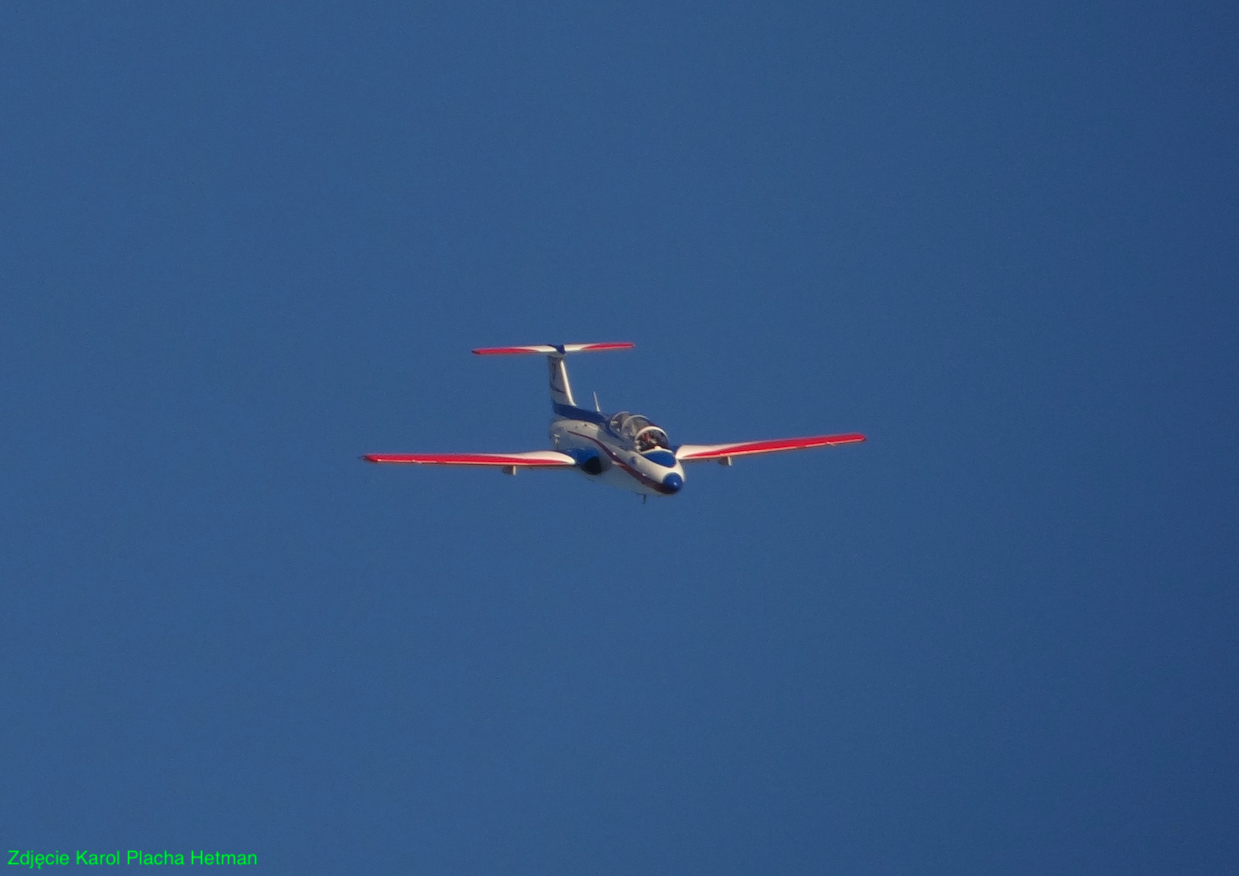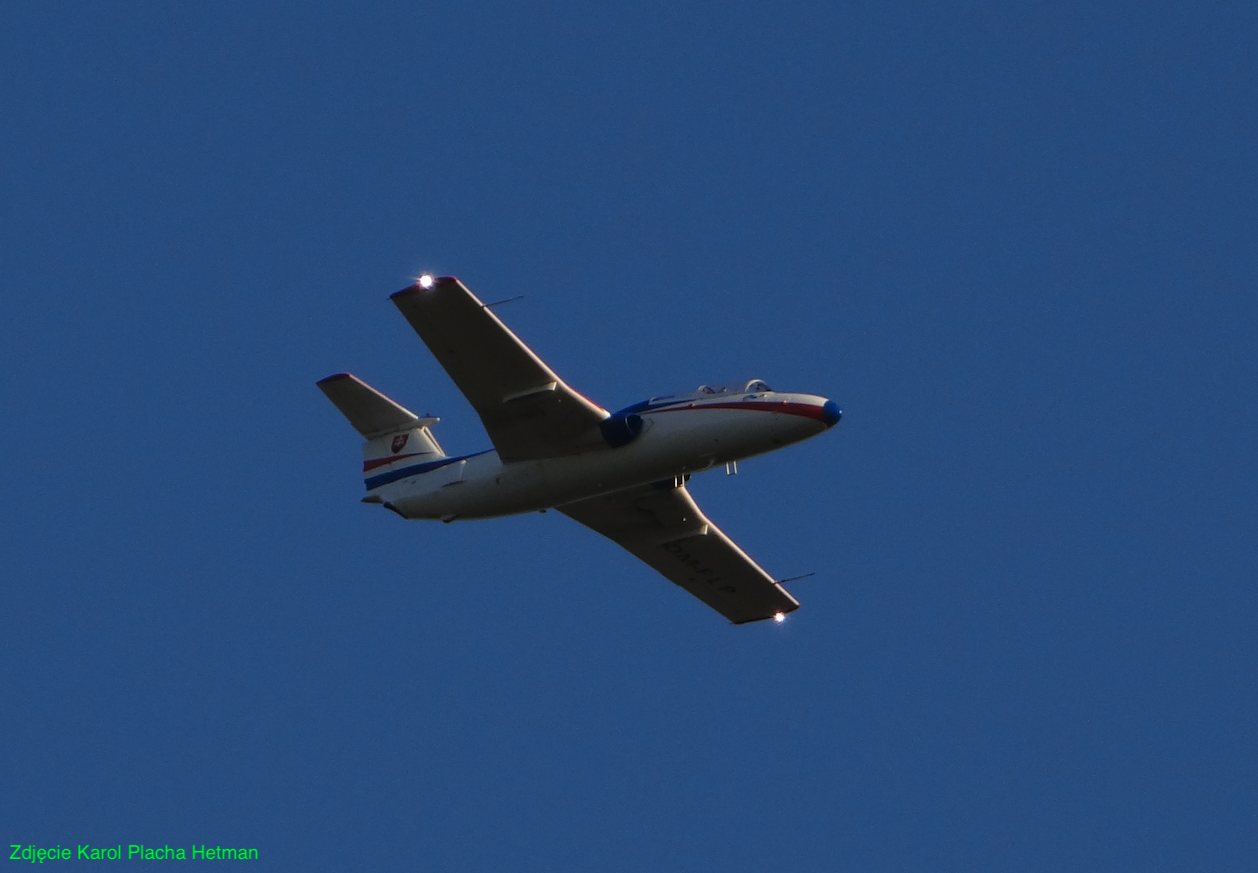Nowy Targ. 12-07-2023r.
Aero L-29 Delfin.
History.
The Aero L-29 Delfín is a turbojet trainer aircraft developed in Czechoslovakia at the end of the 1950s. The first flight was made on April 5, 1959. Two more similar aircraft were created in communist countries: the Soviet Yakovlev Jak-30 and the Polish PZL TS-11 Iskra. In 1961, in Moscow, during comparative tests, the Polish PZL TS-11 Iskra turned out to be the best, but for political reasons, the Aero L-29 Delfín aircraft was chosen. Poland stayed with its TS-11 Iskra and even exported it to India, in the amount of 50 copies. The Yak-30 aircraft was underdeveloped, with numerous faults. In addition, the CCCP industry could not build even 100 aircraft, because all factories built only combat aircraft. The Aero L-29 Delfín aircraft was introduced to the armament of the entire communist camp, which is why it was built in the number of 3,665 copies. Despite this, already in the 70s of the twentieth century, a new, better Aero L-39 Albatros aircraft was developed.
Aero L-29 design assumptions.
In response to the high demand for a turbojet trainer, Aero Vodochody developed the XL-29 aircraft. The aircraft was built in a classic layout, based on the assumptions developed in CCCP. The aircraft made its first flight on April 5, 1959. Production lasted from 1959 to 1974. 3,665 aircraft were built, of which approximately 2,000 were exported to the CCCP. Outside the socialist camp, Aero L-29 Delfín aircraft were transferred to Egypt, Syria, Indonesia, Nigeria and Uganda. Aero L-29 Delfín aircraft took part in numerous local military conflicts.
The aircraft was to be simple in construction and easy to operate. It was supposed to be easy to fly and recover from a spin. Therefore, it was decided to use large wing flaps and air brakes. The brakes were placed on both sides of the fuselage. The plane turned out to be very safe, even for novice pilots. The aircraft could be used from airfields with a ground surface: grass, gravel, sand.
The first prototype was powered by a British Bristol Siddeley Viper turbojet. But the second prototype was powered by the Czech Walter M.701 engine. Even at the end of the 50s, the M.701 engine was an outdated design. The Walter M.701 is a single shaft turbojet engine. Single compressor, centrifugal, single-sided. The combustion chamber is composed of seven combustion chambers. The combustion chambers are of the pitcher type. Single stage axial flow turbine with 61 blades. Maximum thrust is 8.75 kN (1,962 lbf) at 15,500 rpm. Length 2.067 m (81.38 in). Diameter 0.896 m (35.28 in). Dry weight 330 kg (728 lb). Compression ratio 4.3:1. Air mass flow 19.6 kg/s. 2.7 thrust-to-weight ratio.
In Poland, for many years the L-29 aircraft was a little-known construction. In 2014, the Polish Aviation Museum received one copy. Thanks to this, the design has become more familiar to aviation enthusiasts. One of the copies has been preserved in a flying state in Slovakia and is being demonstrated at air shows. Since 2022, this copy has been a guest at shows in Poland, including Leszno and Nowy Targ.
Construction.
Aero L-29 Delfín is a two-seater, training and training aircraft, all metal.
Simple, three-part wings. Parts at the fuselage of the aircraft are integrally connected to the airframe. External parts can be dismantled for easy rail transport. The NACA 632A217 profile at the wing root and the NACA 642A212 profile at the wing tip were used. The wings are equipped with ailerons and flaps.
The fuselage of the aircraft is relatively thick due to the engine with a centrifugal compressor. Cab with seats in tandem arrangement.
Classic tail, divided into rudders and fins, in the "T" arrangement. The vertical tail is integral with the aircraft fuselage.
Three-support chassis with front wheel. Fully retractable: front to the fuselage, main to the wings. All wheels are single.
Walter M.701 engine, maximum thrust of 8.75 kN.
Data T-T Aero L-29 Delfin:
The crew consists of two pilots. Wingspan 10.29 m (33 ft 9 in). Length 10.81 m (35 ft 6 in). Height 3.13 m (10 ft 3 in). Wing area 19.80 m2 (213.1 sq ft). Curb weight 2,384 kg. Maximum take-off weight 3,324 kg. Fuel 962 liters (254 US gal; 212 imp gal). Secondary tanks 2 x 150 liters (40 US gal; 33 imp gal). Top speed 655 km/h (407 mph, 354 kn) at 5,000 m. Stall speed 130 km/h (81 mph, 70 kn). Maximum range 894 km (556 mi, 483 nmi). Flight time 2 hours 30 minutes. Ceiling 11,000 m (36,000 ft). Climb rate 14.00 m/s (2,755 ft/min).
Armament.
The Aero L-29 Delfín aircraft had no permanently mounted muzzle armament. Machine guns were placed in trays. 7.62 mm caliber rifles were used. Bombs or unguided missiles were mounted on two hooks under the wings.
Written by Karol Placha Hetman





